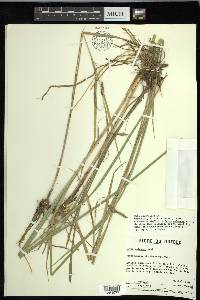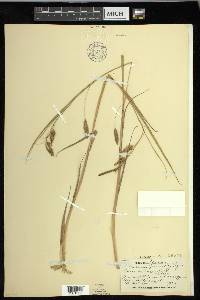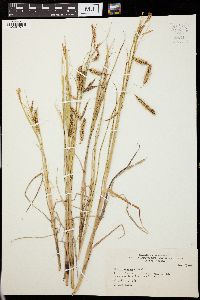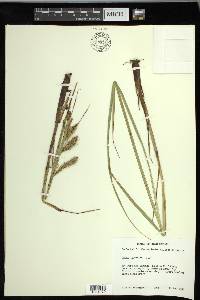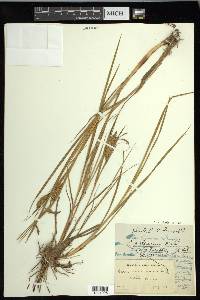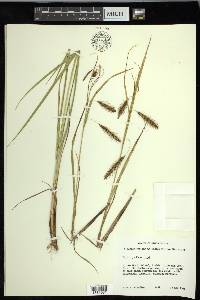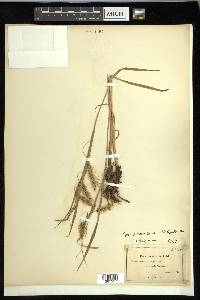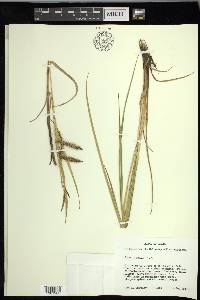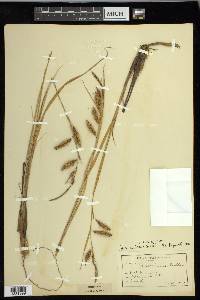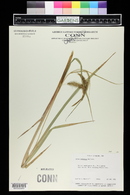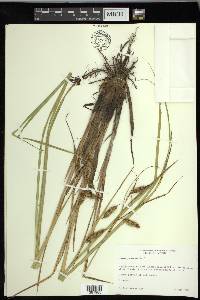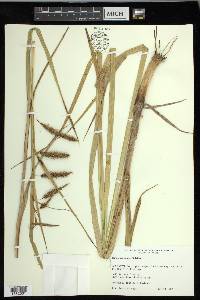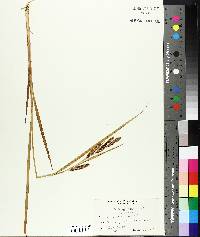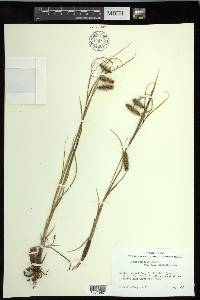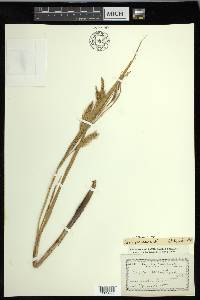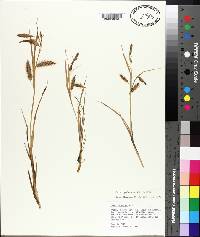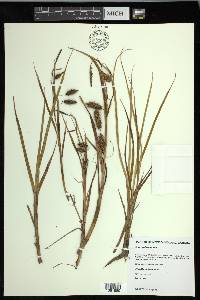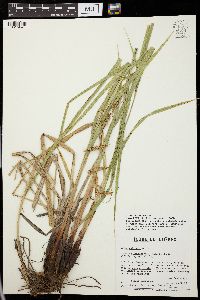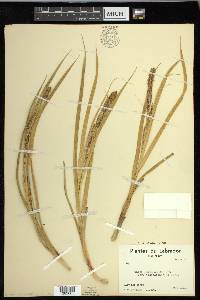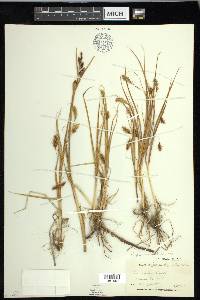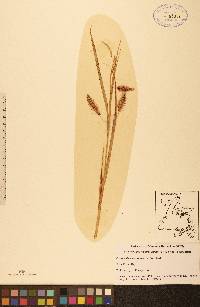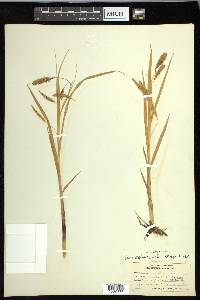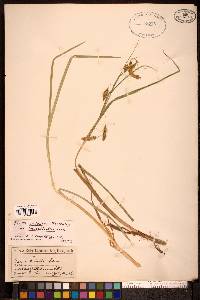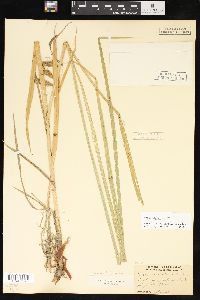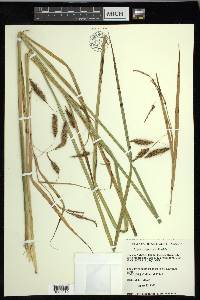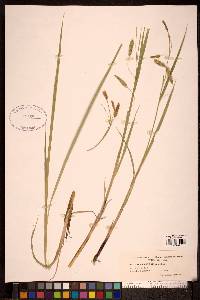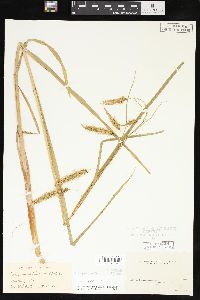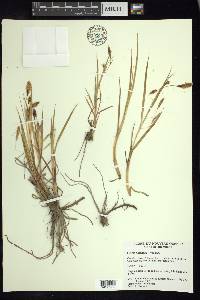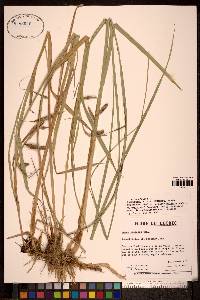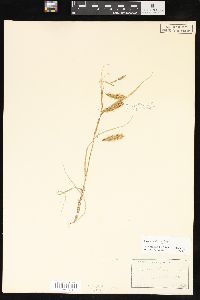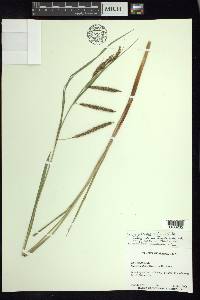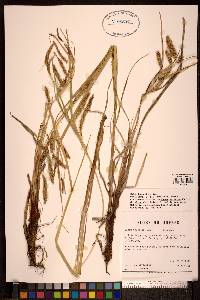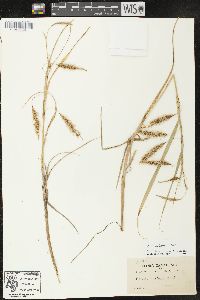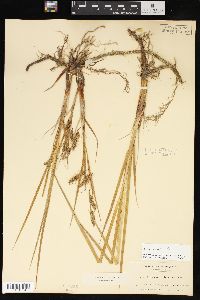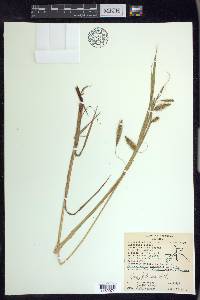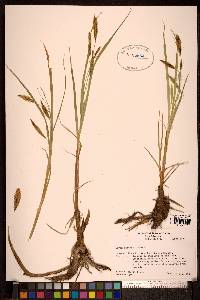Carex paleacea
|
|
|
|
Family: Cyperaceae
Chaffy Sedge
[Carex gardneri Lepage, moreCarex paleaceoides , Carex x neopaleacea Lepage, Carex x paleaceoides Lepage, Carex x paleacoides Lepage] |
Plants not cespitose. Culms obtusely or acutely angled, 15-80 cm, glabrous or minutely scabrous. Leaves: basal sheaths brown or red-brown; sheaths of proximal leaves glabrous, fronts lacking spots and veins, apex U-shaped; blades hypostomic, 4-8 mm wide, abaxially papillose. Proximal bract equal to or longer than inflorescence, 3-8 mm wide. Spikes usually pendent; staminate (1-)2-3; pistillate 2-7; proximal pistillate spike 2.2-6.5 cm × 5-13 mm, base obtuse. Pistillate scales yellow-brown; 3.4-20 × 1-1.7 mm (including awn), midvein reaching apex, 1/3-1/2 the width of scale, apex acuminate or retuse, aristate, awn scabrous. Perigynia divergent, pale brown, 0-50-veined on each face, thick-walled, somewhat inflated, loosely enclosing achenes, ellipsoid, 2.4-4 × 1.3-1.9 mm, leathery, dull, base with stipe to 0.5 mm, apex acute, short-papillose; beak cylindric, 0.2-0.4 mm, entire. Achenes deeply constricted on 1 margins or 1 face, apex rounded, glossy; style base strongly bent. 2n = 71, 72, 73. Fruiting Jul-Sep. Saline, brackish, and intertidal marshes, shores, river estuaries; 0-10 m; St. Pierre and Miquelon; Man., N.B., Nfld. and Labr., N.S., Ont., P.E.I., Que.; Maine, Mass., N.H.; Eurasia. Smaller and depauperate plants of Carex paleacea, mostly from rocky habitats, and aberrant individuals were considered to be hybrids by E. Lepage (1956, 1957, 1957b, 1967, 1976b) even if they were fertile. The following are included in Carex paleacea: C. ×neopaleacea E. Lepage (= C. paleacea × C. buxbaumii), C. ×paleacoides E. Lepage (= C. paleacea × C. glareosa var. amphigena), and C. ×gauthieri E. Lepage (= C. paleacea × C. recta). Similar depauperate plants have been cultivated in an experimental garden and were found to be identical to typical C. paleacea. Their unusual appearance was interpreted as the result of environmental phenotypic modifications (J. Cayouette and P. Moriset 1985, 1986b). Type specimens of both C. ×gardneri E. Lepage and C. ×sublimosa E. Lepage are C. paleacea, but the hybrids C. paleacea × C. salina and C. limosa × C. paleacea do exist. Other verified and accepted hybrids of C. paleacea include C. ×neofilipendula E. Lepage (C. aquatilis), C. ×exsalina E. Lepage (= C. paleacea × C. bigelowii), C. ×saxenii M. Raymond (= C. paleacea × C. recta). Carex nigra × C. paleacea (= C. ×subnigra E. Lepage) is C. vacillans, and C. paleacea × C. stylosa var. nigritella (= C. ×ungavensis E. Lepage) is probably a hybrid involving C. paleacea.
Stems stout, 3-8 dm, aphyllopodic, borne singly or few together on long stout rhizomes; main lvs 3-8 mm wide; bracts lf-like, sheathless; spikes widely spreading or drooping on slender peduncles, the staminate 1-3, mostly 2-4 cm, the pistillate below the staminate, 2-4, stout-cylindric, 2-5 cm, 5-8 mm thick excluding the scales; body of the pistillate scales ovate and obtuse to retuse, somewhat shorter than the perigynia, with brown sides, the conspicuous pale midvein a third as wide as the scale and prolonged into a rough flat awn to 1 cm; perigynia biconvex to planoconvex, glaucous-green, firm, elliptic, 2.2-3.5 mm, three-fifths as wide, 2-ribbed, otherwise nerveless or dorsally several-nerved, abruptly apiculate to a beak 0.2-0.5 mm; achene lenticular, loosely enveloped, strongly constricted on one side near the middle; 2n=71-73. Coastal salt-marshes; Greenl. and w. Can. to Mass.; n. Europe. Gleason, Henry A. & Cronquist, Arthur J. 1991. Manual of vascular plants of northeastern United States and adjacent Canada. lxxv + 910 pp. ©The New York Botanical Garden. All rights reserved. Used by permission. |



